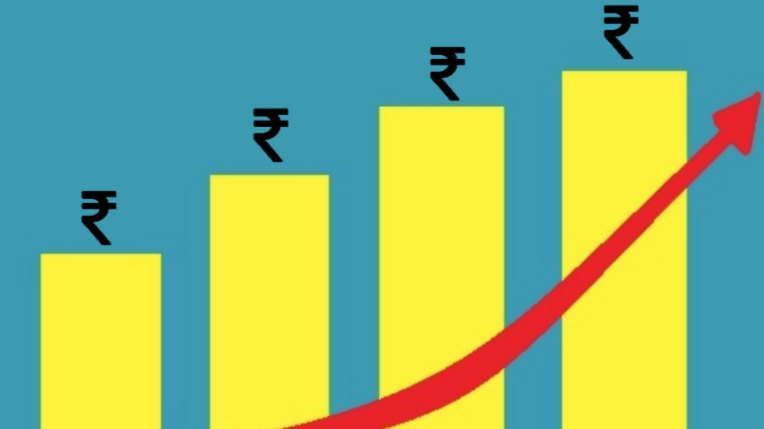Fixed rate loans, referred to as MCLR (marginal cost-based lending rate) move up with a lag. On the other side of the table, the move stands to benefit depositors.
Even as the Reserve Bank of India governor appeared on television screens on Wednesday morning, most people in the market were expecting an interest rate hike of 35 basis points (bps), i.e., 0.35 percent point. And this is just what happened. The interest rate increase we are talking about is on the repo rate, the rate at which the RBI lends funds to banks, if required, one day at a time. It went up from 5.9 per cent to 6.25 per cent. This rate is the pivot for interest rates in the entire economy. A hike in the repo rate today increases banks’ lending and deposit rates tomorrow. People’s antennae were up for a gauge on future rate hikes—whether there is any hint or softening of the stance—to gauge how the RBI would act at its next meeting on February 8, 2023. And the RBI kept its options open. If required, it will go in for another rate hike of, say, 25 bps.
Having said that, things can change over the next two months. There would be two more data points on inflation, that of November, to be declared in a few days from now and that of December, to be announced in January 2023. If inflation is on the higher side of expectations, that may be a case for another rate hike. There is a meeting of the Federal Reserve scheduled on December 14, where the US central bank is expected to hike the interest rate by 50 bps. This is known to markets and the RBI. What will be of relevance is the Fed’s outlook on future interest rate action. Global developments on geopolitical tensions, crude oil price (which has a big bearing on our inflation) and other prices would pan out over next two months. Moreover, the Union budget will be announced on February 1, 2023, i.e., just prior to the next RBI meeting on February 8. The extent of fiscal deficit announced in the budget and whether it is overall pro- or anti-inflationary would influence the RBI’s deliberations.
Other aspects of the review
In Wednesday’s policy review, the other variables that financial market participants would look at are inflation and GDP growth. The RBI’s projection on Consumer Price Index or CPI inflation remains similar to that of the previous policy review, which is 6.7 percent in 2022-23 and expected to ease to 5 percent in the first quarter of 2023-24. There is a minor upward tweak in inflation projections, in decimal points only. GDP growth projection for the current year, 2022-23, was revised downward from 7 percent earlier to 6.8 percent. A downward revision in growth projections implies the need for support from the RBI in terms of not-so-high interest rates. However, inflation is the bigger consideration for the central bank when it comes to interest rate decisions.
Market reaction
The bond market had mostly priced in interest rate action in today’s meeting of the monetary policy committee. Usually, when the RBI hikes rates, traded yield levels (interest rates) for bonds in the secondary market move up. However, when market events are already priced in, the incremental impact is not much. That is what happened this time. As a reference point, the 10-year government security yield was at 7.23 percent prior to the announcement of the policy, which moved up to 7.3 per cent. The marginal upward movement, of 7 bps, is due to the fact that the RBI did not soften its stand on future rate hikes, which the market was expecting.
Impact on you
We had discussed in an article on November 30 why it is a good time to invest in debt funds now. The rationale is, portfolio yields of debt funds are much better than, say, two years ago. After Wednesday’s rate hike, the portfolio yields of debt mutual funds will move up marginally. It is marginal and not substantial, because the market had already factored in today’s rate hike of 35 bps. Since interest rates and bond prices move inversely, there will be a temporary, limited impact on the performance of debt funds.
Interest rate on floating rate loans will move up immediately, as these are benchmarked to an external benchmark, referred to as EBLR. The RBI repo rate has moved up by 2.25 percentage points since May 4; three- and six-month treasury bill yields also have moved up significantly. EBLR loan rates will move up accordingly. Fixed rate loans, referred to as MCLR (marginal cost-based lending rate) move up with a lag. On the other side of the table, the move stands to benefit depositors. Since the RBI started hiking the repo rate, bulk deposit rates have moved up palpably. Retail deposit rates, however, have moved up less than proportionately. It is expected that retail deposit rates will move up, with a lag.
Source: https://www.moneycontrol.com/news/business/personal-finance/rbi-hikes-interest-rate-as-expected-and-keeps-the-door-open-for-further-hikes-9664881.html


